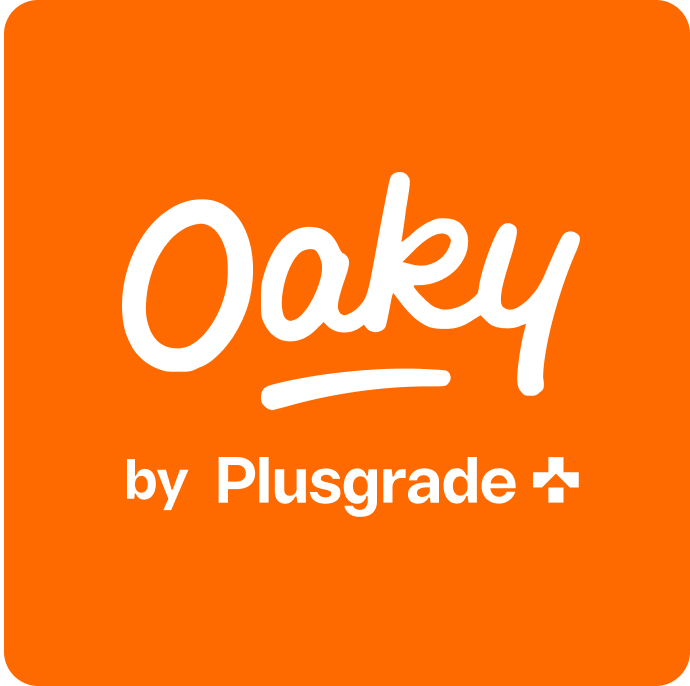Driving hotel guest loyalty and retention [Ultimate guide]
Oaky
•

Winning guest loyalty has been a hot topic for many hoteliers in recent years. With OTAs commissions on the rise and increased competition, implementing and scaling effective loyalty programmes has become more vital than ever.
Are you also searching for ways to attract and retain guests? Read on to discover how to create and implement effective loyalty programmes and maintain a long-lasting relationship with your hotel guests.
Key takeaways
As a hotel, you should focus on building long-term relationships by offering loyalty programmes and personalised guest experiences. Using smart technology and leveraging feedback can give you the upper hand in maintaining robust hotel loyalty programmes.
Successful hotel loyalty programmes should be tailored to your guests’ needs and preferences, providing the rewards your target guests will appreciate.
To adjust and refine your strategy, you need to start measuring key metrics (repeat bookings, average guest spending, net promoter score, etc.).
What is guest loyalty in the hotel industry?
Guest loyalty can be defined as a guest’s strong preference and affiliation with a specific hotel brand. It means the guest continuously chooses your property (chain) over others.
Typically, it evolves from the emotional connection with a brand, appreciation for its distinctive services, the guest's treatment, design, or the hotel's location.
Why is hotel guest loyalty important?
Winning hotel customer loyalty is beneficial for multiple reasons. From reducing marketing and customer acquisition costs to ensuring a stable revenue (your frequent guests are inclined to spend more and more often!), a robust guest loyalty programme pays off in several ways.
Another advantage is that with loyal guests, you can set up a reliable feedback loop. Your regular guests are more open to sharing constructive and actionable feedback with you. Their familiarity with the hotel allows them to offer valuable insights, enabling you to identify areas for improvement and enhance overall guest satisfaction. It helps you strengthen the loyalty of your current guests and engage with new ones more effectively to convert them into loyal customers faster, too.
On top of that, loyalty incentives tailored to your guests are instrumental in elevating your guest experience.
How to develop an effective hotel loyalty programme
Creating a successful hotel loyalty programme is key to showing appreciation and providing guests with an incentive to return. However, crafting a successful programme might be easier said than done. It requires a step-by-step process and careful consideration of which structure to use.
1. Set up goals and objectives for your guest loyalty programme
When defining the objectives for your hotel rewards programme, it's essential to identify specific, measurable, achievable, relevant, and time-bound (SMART) goals that align with your hotel's overall business strategy.
Here's a more detailed explanation of the key objectives you can consider when setting up your own loyalty programme.
Increase guest retention
Why it's important: Retaining existing customers is often more cost-effective than acquiring new ones. Given that hotels have to give away 15-20% in commissions to OTAs per successful booking, driving repeat business is key to saving costs. Moreover, you can reduce the need for extensive marketing efforts to attract new guests.
Measurable goal: Set a specific target for the increase in the percentage of repeat guests over a defined period.
Encourage more guest spending
Why it's important: While attracting repeat business is crucial, increasing the average spending per guest can significantly improve your revenue. A loyalty programme can motivate guests to explore additional services, upgrade their rooms, or spend more on amenities during their stay. Using hotel upsell software like Oaky is one of the proven solutions to bump up your guest spending through upselling and cross-selling to them in an automated way throughout the entire guest journey.
Measurable goal: Set targets for the average spending per guest and track the programme's impact on upsells and additional services.
Build brand loyalty:
Why it's important: Loyalty programmes contribute to the emotional connection between guests and your brand. A loyal customer is more likely to become an advocate, recommending your hotel to others and positively impacting your online reviews and reputation.
Measurable goal: Monitor customer satisfaction scores, online reviews, and the Net Promoter Score (NPS) to gauge the loyalty programme's impact on brand perception.
Improve customer lifetime value (CLV):
Why it's important: Loyalty programmes can extend the lifetime value of a customer by fostering repeat business. By increasing the CLV, you maximise the overall revenue generated by each customer over the course of their relationship with your hotel.
Measurable goal: Set a target for the increase in CLV and assess how the loyalty programme positively influences customer retention and spending patterns.
Gather customer data and insights:
Why it's important: Loyalty programmes provide an opportunity to collect valuable customer data and insights. This data can be used to personalise marketing efforts, understand guest preferences, and refine the overall guest experience.
Measurable goal: Implement systems to track and analyse customer data, ensuring compliance with privacy regulations, and apply the insights gained to enhance the effectiveness of the loyalty programme.
2. Uncover your guests’ needs and preferences
Dive deeper into data from your CRM or upsell software to shape ideas for your reward programme. If you use an upselling software like Oaky, you can get a clearer picture of which guest segments usually buy specific offers. For example, is there a pattern that business travellers often book an airport transfer or early check-in? You can bundle these offers with a room upgrade for loyal business guests.
Another idea is to launch post-stay surveys to learn more about your guest’s likes and dislikes.
In case you already have a loyalty programme, you can ask your guests’ feedback to see where they learned about the programme, how they use it, and whether they find it beneficial and engaging. This will allow you to source ideas on marketing your loyalty programme, improving or revamping it.
3. Personalise and customise guest experiences
If you cater to different guest segments, you should be mindful of varied guest preferences and needs to launch programmes that resonate with them. It means if you have different types of bookers — business, leisure guests or digital nomads — you might need to consider different types of perks per segment.
Personalised and customised rewards are a no-brainer when you look at the performance of segmented vs non-segmented upsell deals that Oaky’s customers present to guests pre-arrival.
According to our data, segmented service deals are requested 84% more often than non-segmented deals. The same goes for segmented room upgrades. They outperform their non-segmented counterparts by 72%.
All you need to do is collect data on your guests’ purchasing behaviours and habits per segment and identify offers and experiences they are more likely to buy.

4. Choose a loyalty programme structure
Decide on the type of loyalty programme you want to implement. Common hotel rewards programmes include points-based systems, tiered memberships, or simple discount programmes.
Types of guest loyalty programmes:
1. Points-based systems:
With this system, guests earn points for each stay or money spent on hotel services.
The accumulated points can then be redeemed for a variety of rewards, such as free nights, room upgrades, spa treatments, or even discounts at affiliated partners.
Not only does this approach incentivise guests to choose your hotel for future stays, but it also encourages them to explore additional services within your property.
Pros:
Versatility and flexibility: Guests can choose from a variety of rewards, allowing them to personalise their experience.
Encourages spending: Guests are motivated to spend more within the hotel to accumulate points, boosting your ancillary revenue.
Cons:
Complexity: Managing point systems can be intricate, both for guests and hotel staff.
Perceived value: Guests may find it challenging to equate the value of points to real-world benefits.
2. Tiered memberships:
Tiered membership programmes add a sense of exclusivity and progression to the traditional loyalty model. Guests start at a basic level and move up through different tiers based on their level of engagement or spending. Each tier offers better rewards and privileges, creating a sense of achievement and recognition for loyal guests.
For example, a basic tier might offer discounts on room rates, while an elite tier could provide access to exclusive amenities, personalised services, and priority check-in. Tiered memberships not only encourage initial enrolment but also inspire guests to elevate their status by choosing your hotel repeatedly.
Pros:
Incentivises loyalty: Rewards increase as guests move up tiers, encouraging long-term loyalty.
Exclusivity: Tiers create a sense of exclusivity, making guests feel valued and special.
Differentiation: Allows for segmentation of guests based on their loyalty level, enabling targeted marketing.
Cons:
Slow progression: It may take time for guests to advance through tiers, and some may lose interest.
Potential frustration: Guests in lower tiers may feel excluded from certain benefits enjoyed by members at a higher tier.
3. Simple discount programmes:
Simple discount programmes appeal to guests seeking immediate and straightforward benefits. With this loyalty model, guests receive direct discounts on room rates, services, or amenities. This simplicity makes it easy for guests to understand and participate in the programme, attracting a broad audience.
Discount programmes are particularly effective for price-sensitive guests who prioritise immediate savings. While lacking the complexity of points or tiered systems, a well-structured discount programme can still foster a sense of appreciation among guests and encourage repeat business.
Pros:
Easy to understand: The simplicity of discounts makes it easy for guests to comprehend and participate.
Immediate gratification: Guests receive immediate benefits, appealing to those seeking instant rewards.
Broad appeal: Discounts can attract a wide range of guests, including price-sensitive customers.
Cons:
Limited differentiation: It may not foster a strong emotional connection or sense of exclusivity.
Profit margins: Continuous discounts may impact profit margins if not carefully managed.
Short-term focus: Guests may be motivated by short-term savings rather than long-term loyalty.
All in all, the choice between these structures depends on the hotel's specific goals, target audience, and resources available for programme management. You may even combine elements from different structures to create a hybrid loyalty programme that addresses a variety of guest preferences.
Measuring guest loyalty: Key metrics and indicators
To assess the efficiency of your loyalty programmes accurately and measure guest loyalty, you should gauge certain metrics like return reservations, average spend per stay, and customer reviews.
Keeping your finger on the pulse of the relevant metrics will give you insight into your guest satisfaction level and how effective current reward programmes are.
- Repeat bookings
Repeat bookings can be an important sign of customer loyalty and a major factor in improving hotel revenue. You should be able to pull this data from your PMS.
- Average spend per stay
There is a positive correlation between loyalty programme members and the amount spent per stay in the hotel industry. Data indicates loyal customers tend to be less price sensitive, spending 67% more than non-loyal guests.
- Total spending to date
The total amount your specific guest has spent throughout a specific time range.
- Customer lifetime value (CLV)
An estimate of the revenue you will generate from a guest during the lifetime of an average business relationship.
- Churn rate
The percentage of guests discontinuing their stays at the hotel over a specified period, such as a year.
- NPS
Net Promoter Score (or simply NPS) is a metric that you can derive from your post-stay guest surveys. In the hotel industry, NPS is often used to gauge guests' likelihood of recommending a hotel to others based on their recent experience. The Net Promoter Score is determined through a survey question that typically asks:
“On a scale of 0 to 10, how likely are you to recommend our hotel to a friend or colleague?"
Based on their responses, you can categorise your guests into three groups:
Promoters (score 9-10): These are highly satisfied and frequent guests who are likely to recommend the hotel to others.
Passives (score 7-8): These customers are satisfied, but not enthusiastic. They are considered neutral and may not actively promote the hotel.
Detractors (score 0-6): These are dissatisfied customers who may share negative feedback and are unlikely to recommend the hotel.
To calculate the Net Promoter Score, you should subtract the percentage of detractors from the percentage of promoters. The score can range from -100 to 100, with a higher score indicating a higher likelihood of customer recommendations.
Leveraging technology for guest loyalty management
Since driving and boosting your guest loyalty is closely tied to how well you know your guests, using data and technology is becoming increasingly important. To cultivate guest loyalty and enhance personalisation, employ the following systems:
A PMS (property management system) has a goldmine of data on your guests, their bookings, services purchased and spending. Use it as a source of data to guide your loyalty efforts.
CRM (Customer relationship management) consolidates guest data into a centralised database, providing a comprehensive view of guest interactions, preferences, and history. This centralised information will enable you to understand your guests better and tailor services to meet individual preferences.
Hotel upselling software allows you to put your data and insights on guest preferences into practice. For example, by using Oaky and its segmentation module, you can tailor specific deals and packages for your loyal guests. What’s more, in combination with an RMS, you can even customise your pricing so your loyal guests will get access to exclusive rates, which are not available for your first-time bookers.
The importance of staff training in building guest loyalty
One of the pillars in driving guest loyalty and scaling the programme is training your staff and aligning them around the common goals.
Investing in staff training is key to a hotel’s success, as it provides your teams with the necessary knowledge and skills that will enable them to exceed guest expectations. This approach can bring higher levels of customer satisfaction, contributing significantly to creating loyal guests. To achieve this, employees must be appropriately trained so they are proficient enough to provide a remarkable hotel service that meets or even surpasses guest expectations.
Case studies: successful hotel loyalty programmes
Accor Live Limitless (ALL)
Accor Live Limitless (ALL) is an acclaimed loyalty programme among travellers for its unique offering of experiences and privileges. This programme rewards members with loyalty points for each stay at Accor Hotels.
In order for guests to maximise the benefits of their membership, it provides various opportunities such as redemption and accumulation of points alongside an unmatched hospitality experience every time one books via this service. It ultimately enhances customer satisfaction by catering to individual preferences during hotel stays.
Radisson Rewards
Radisson Hotel Group has put together a loyalty programme known as Radisson Rewards. It allows guests to reap the benefits of their commitment through accumulating points on lodging charges, redeeming them for discounts towards future bookings and gaining personal advantages that are customised according to individual guest choices.
By having this rewards system in place, along with its emphasis on personalisation, it is easy to understand why they have been so successful at cultivating satisfaction among customers.
Hilton Honors
Hilton Honors, by Hilton Worldwide, offers a straightforward and rewarding loyalty programme. Members can earn points through hotel stays, credit card spending, and various partnerships. The programme is known for its flexibility in redeeming points for free nights or other travel-related benefits.
Choice Privileges
Choice Hotels' loyalty programme, Choice Privileges, is recognised for its simplicity and transparency. Members can earn and redeem points at a variety of properties, including budget-friendly and mid-scale options.
Wyndham Rewards
Wyndham Rewards stands out for its straightforward structure, where a flat rate of points is required for free nights at any participating property. This programme is particularly attractive for those seeking simplicity and consistency.
Bottom line
The key to a successful guest programme lies in understanding your guests — their behaviour, preferences, and defining clear goals for your hotel rewards programme.
By nailing these fundamentals, you can choose the right structure for your hotel rewards programme and implement effective marketing tactics to expand your programme. To ensure these programmes are implemented effectively, incorporate automation, like hotel upsell software, guaranteeing your guests access to exclusive and personalised offers and rates. This, in turn, enhances their guest experience and boosts your revenue.


